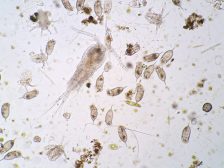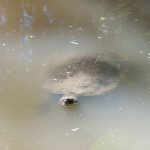Table of Contents
Exotic Species Definition
What is an exotic species? In biology, an exotic species refers to a plant species or an animal species that is non-native. It is introduced into an area where it does not occur naturally. The introduction of the species may be deliberate or accidental. It is not always considered a nuisance or invasive. (Ref. 1) The presence of an exotic species may have a significant effect on the local ecosystem. The ecological impact varies; it may generally bring adverse effects to the ecological balance in an ecosystem or it may be beneficial. At other times, the effect is not too significant to cause major changes in the ecosystem. Synonyms: introduced species; alien species; foreign species; non-native species; non-indigenous species.
Difference Between Exotic and Invasive Species
An invasive species is defined as a non-native species that causes disruption in the local ecosystem. Therefore, it is a type of exotic species but it particularly became a nuisance because it “invaded” and outcompeted the native species in the local ecosystem. In other words, the species has become a “pest” to its new location. For instance, an animal is introduced as a biocontrol that will kill the pests on a particular ecosystem. After some time, the biocontrol exotic species did not just kill the pest but also outnumbered other species not regarded as pests as their population grew exponentially.
The term exotic species has a wider scope and the invasive species is one of its subsets; some of the other subsets are “naturalized species” (i.e. exotic species that have become established and are able to sustain their population even without human help) and “acclimatized species” (i.e. exotic species that have physically and behaviorally adjusted to the new environment).
Nature of Introductions
The nature of the introduction of an exotic species has to be anthropomorphic, i.e. human-mediated. As already mentioned, the introduction may be intentional (on purpose) or accidental. One of the common reasons for introducing a species to a non-native location is to serve as a biological control agent of certain species, particularly those that produce harm. The deliberate introduction may also be for economic gain. For instance, a plant that is not native to a new geographical location is cultivated so that it becomes locally available. As for accidental introductions, human activities serve as the means for the species to be transported from one geographical location to another. For instance, some rat species spread to different parts of the world by riding on ships. This is what happened during the early voyages. (Ref. 2) Rattus rattus, a native of the Indian subcontinent, has now spread throughout the world. (Ref. 3)
References
- EPA, OEI, SOR, System Of Registries. (2017). System of Registries | US EPA. Epa.Gov. https://ofmpub.epa.gov
- Harper, G. A., & Bunbury, N. (2015). Invasive rats on tropical islands: Their population biology and impacts on native species. Global Ecology and Conservation, 3, 607–627. https://doi.org/10.1016/j.gecco.2015.02.010
- www.upane.it, U. (2011). GISD. Iucngisd.Org. http://www.iucngisd.org/gisd/species.php?sc=19
©BiologyOnline. Content provided and moderated by BiologyOnline Editors.








